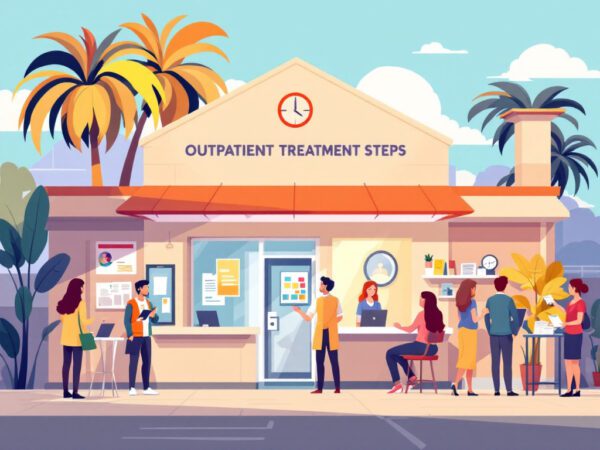Understanding EMDR Therapy
Introduction to EMDR Therapy
EMDR therapy, short for Eye Movement Desensitization and Reprocessing, is a therapeutic approach developed by Francine Shapiro in 1989. This innovative method enables individuals to heal from trauma without the need for extensively discussing distressing issues. During EMDR therapy, clients focus on changing their emotions, thoughts, or behaviors that stem from traumatic experiences, allowing them to process memories in a healthier way. Notably, the first clinical trial investigating EMDR took place in 1989, marking the beginning of a growing recognition of its effectiveness in treating trauma (Cleveland Clinic).
Traumatic memories differ from normal memories in the way they are stored in the brain, often leading to negative symptoms, emotions, and behaviors that significantly impact individuals’ lives. EMDR addresses these memories by utilizing specific eye movements to facilitate the processing of traumatic occurrences, making it an essential tool for many seeking recovery.
Benefits of EMDR Therapy
The benefits of EMDR therapy are extensive, making it a vital option for those grappling with trauma and related mental health issues. Some key advantages include:
-
Efficiency: EMDR can often lead to rapid results in comparison to traditional talk therapies. Studies show that clients can experience significant relief after just a few sessions.
-
Non-intrusiveness: EMDR allows clients to address and process trauma without needing to delve deeply into the specifics of their distressing experiences. This can make it easier for individuals to engage in therapy without feeling overwhelmed.
-
Trauma-Informed Approach: This therapy is recognized as a best practice for treating veterans with PTSD, as endorsed by both the Department of Veterans Affairs and the Department of Defense in the US (Cleveland Clinic).
-
Wide Applicability: EMDR therapy is not limited to PTSD; it can also be beneficial for various mental health issues such as anxiety, depression, and panic disorders. Its adaptable nature makes it suitable for different age groups and demographics.
-
Long-Lasting Effects: Many individuals report sustained improvement in their symptoms following the completion of EMDR therapy, which can contribute positively to their overall mental health and well-being.
These benefits underscore the importance of considering EMDR as a treatment option for ourselves or our loved ones who are struggling with the effects of trauma. For additional support, we can explore various outpatient addiction treatment programs, including specialized therapies and services designed to enhance recovery.
Who Can Benefit from EMDR
EMDR therapy is a versatile treatment that can significantly benefit a variety of individuals dealing with different challenges. Understanding who can benefit from this method helps us to appreciate its wide-reaching implications on mental health care.
EMDR Therapy for Various Age Groups
EMDR therapy provides support for a broad spectrum of age groups, including:
| Age Group | Benefits |
|---|---|
| Children | Specialized EMDR for children focuses on trauma and grief. |
| Adolescents | Effective for teens facing anxiety, depression, and PTSD. |
| Adults | A well-established method for mitigating trauma-related symptoms. |
| Seniors | Offers relief for age-related mental health issues and trauma recovery. |
According to Cleveland Clinic, EMDR is beneficial for adolescents, teenagers, and adults of all ages. Some healthcare providers even specialize in providing EMDR therapy for children. This adaptability makes EMDR a crucial therapy for families seeking to promote healing across generations.
Specializations in EMDR Therapy
EMDR therapy is not one-size-fits-all; it can be tailored to serve specific populations and concerns. Some common specializations include:
| Specialization | Description |
|---|---|
| PTSD Treatment | EMDR is widely acknowledged as a best practice for PTSD, endorsed by the Department of Veterans Affairs, Department of Defense, and the WHO. |
| Trauma-Informed Care | Focuses on individuals with trauma backgrounds across various settings. |
| Dual Diagnosis Treatment | Addresses those with co-occurring mental health and substance abuse issues, integrating EMDR with other therapies. |
| Specialized adult programs | Tailored for specific populations, such as veterans, or survivors of abuse. |
EMDR therapy has shown to be faster-acting compared to traditional talk therapy, making it an effective option for those looking to overcome trauma more efficiently (Aspire Counseling). It can even be integrated with other treatment modalities to comprehensively address distress arising from multiple life events.
By understanding the benefits of EMDR therapy and recognizing the diverse populations it can serve, we can guide individuals or loved ones toward making informed decisions in their mental health journey.
Process of EMDR Therapy
EMDR therapy is a structured approach that focuses on helping individuals process and resolve traumatic experiences. Understanding the mechanisms and phases involved in this therapeutic method enhances our awareness of its effectiveness and application.
Mechanisms of EMDR Therapy
EMDR therapy operates on the principle of “processing.” This means helping clients establish a learning state that allows them to digest and store problematic experiences appropriately in the brain. The aim is to retain positive emotions, understandings, and perspectives that contribute to healthy behaviors and interactions while discarding negative emotions, beliefs, and body sensations.
During therapy, the client is guided to focus on traumatic memories while also engaging in bilateral stimulation, often achieved through guided eye movements. This dual focus helps to reprocess the traumatic memories, facilitating healing and growth.
Phases of EMDR Therapy
EMDR therapy comprises eight distinct phases, each designed to effectively process and resolve traumatic experiences:
| Phase | Description |
|---|---|
| 1. Initial History and Treatment Planning | The therapist gathers the client’s background and determines treatment goals. |
| 2. Preparation | The therapist explains the EMDR process and establishes a safe environment for the client. |
| 3. Assessment | Specific memories and associated negative beliefs are identified for processing. |
| 4. Desensitization | The client focuses on distressing emotions and sensations while undergoing bilateral stimulation to reduce their intensity. |
| 5. Installation | Positive beliefs that replace negative thoughts are integrated into the client’s self-concept. |
| 6. Body Scan | The therapist guides the client to identify any residual tension or discomfort in the body associated with the traumatic memory. |
| 7. Closure | The session concludes with the therapist providing self-calming techniques, ensuring the client feels better than at the start of the session. |
| 8. Reevaluation | This phase occurs in subsequent sessions to assess the effects of therapy on processing the trauma and determine any additional targets. |
Typically, EMDR therapy requires three to six sessions for a single traumatic event, but more complex traumas may need eight to twelve or more sessions (Cleveland Clinic). Each phase contributes to a comprehensive approach that not only aims to alleviate distress but also promotes healing and personal growth. For those interested in exploring this therapy, understanding these phases is essential in making informed decisions in their treatment journey.
Effectiveness and Recognition
Clinical Trials on EMDR Therapy
EMDR therapy has a well-documented history of effectiveness, beginning with the first clinical trial in 1989. Over the years, numerous studies have demonstrated that EMDR can help individuals recover from trauma more quickly than many traditional methods. Research shows that EMDR is effective for a variety of mental health conditions, enhancing its reputation as a valuable treatment option Cleveland Clinic.
Summary of EMDR Clinical Trial Findings
| Year of Study | Results | Focus Area |
|---|---|---|
| 1989 | Initial effectiveness observed | General trauma |
| 2000s | Faster recovery from PTSD | PTSD |
| 2010s | Broadened application to various conditions | Anxiety, depression, phobias |
Institutional Approval of EMDR Therapy
EMDR therapy is recognized as a best practice treatment for post-traumatic stress disorder (PTSD) and other mental health issues. The U.S. Department of Veterans Affairs and the Department of Defense endorse EMDR for veterans suffering from PTSD. Additionally, EMDR has received formal approval from the World Health Organization (WHO) and multiple government agencies in countries such as the United Kingdom, Australia, and Germany. This widespread recognition underscores the therapy’s efficacy and reliability in the mental health field Cleveland Clinic.
Recognitions
| Organization | Recognition Level | Focus Area |
|---|---|---|
| U.S. Department of Veterans Affairs | Best practice | PTSD in veterans |
| World Health Organization | Official approval | PTSD and related conditions |
| UK Department of Health | Endorsement | General mental health treatment |
For those seeking help with addiction or related mental health challenges, integrating EMDR therapy into a comprehensive plan can enhance recovery. We encourage anyone interested in learning more about available treatments to explore our outpatient addiction treatment options, including programs specifically tailored for dual diagnosis and co-occurring disorders.
Considerations for EMDR Therapy
When considering EMDR therapy, it is essential that we are aware of both the potential risks and necessary preparations involved. This understanding can greatly impact the efficacy of the treatment and the overall experience for us or our loved ones.
Potential Risks and Side Effects
EMDR therapy is a powerful treatment for trauma and anxiety, but it is not without its risks. Some individuals may experience retraumatization, which can trigger intense emotional distress, vivid flashbacks, overwhelming anxiety, and physical symptoms, particularly during Phase 4 of therapy (Emotions Therapy Calgary).
Dissociation can also be a significant concern. It is particularly prevalent among individuals with complex trauma histories, leading to feelings of detachment from the body or emotions.
To illustrate the potential side effects, we can refer to a table outlining common reactions:
| Side Effect | Description |
|---|---|
| Emotional Distress | Feelings of sadness, anger, or frustration. |
| Flashbacks | Frequent recollections of trauma. |
| Dissociation | Detachment from reality or emotions. |
| Anxiety | Heightened sense of fear or nervousness. |
| Physical Symptoms | Symptoms like increased heart rate or nausea. |
It’s important to consult a qualified professional to mitigate these risks.
Preparation and Therapist Qualifications
Inadequate preparation for EMDR therapy can lead to unproductive sessions, which may increase emotional distress and the likelihood of dissociation. Building coping skills and having a solid support network are crucial steps before embarking on this journey (Emotions Therapy Calgary).
Equally important is verifying the qualifications of a therapist. There are over 60,000 certified therapists trained in EMDR therapy, but not all may have the appropriate experience or approach for your specific needs. Ensuring that your therapist has a solid background in EMDR techniques will enhance the effectiveness and safety of your therapy (Emotions Therapy Calgary).
To summarize, proper preparation and choosing the right therapist play a significant role in the effectiveness of EMDR therapy. For those interested in various treatment methods for drug and alcohol addiction, resources including our outpatient addiction treatment and intensive outpatient program options can provide additional paths for recovery.
Personal Experience with EMDR
EMDR Session Experience
During our EMDR therapy sessions, we first undergo an in-depth assessment to guide our treatment plan. This initial phase involves discussing our history, identifying possible targets for processing, and developing skills that we may need for future situations. Establishing a ‘safe place’ is a crucial part of the process, as it helps us feel calm and balanced before we delve into processing distressing memories. This safe space allows us to establish good coping mechanisms, which are essential for successfully navigating through trauma (PTSD UK).
As the sessions begin, we focus on specific distressing memories, thoughts, or images while the therapist initiates gentle, rhythmic eye movements. Throughout the process, we are encouraged to shift our focus to more positive beliefs, with the goal of gradually decreasing the emotional distress associated with those memories. Sessions are structured in sets, with breaks in between where the therapist checks in on how we are feeling. We have noted that after several sets, our confidence in these positive beliefs tends to increase, and our therapists closely monitor any body sensations we experience during this time (PTSD UK).
Post-EMDR Therapy Effects
After completing the EMDR processing, we often find that emotional distress related to our targeted memories has been significantly reduced or even eliminated altogether. Many clients report gaining important cognitive insights, leading to a sense of relief and openness towards the world. This newfound relaxed contentment can be life-changing and is often accompanied by improved mental clarity and emotional resilience (PTSD UK).
A table summarizing the changes we typically experience following EMDR therapy could look like this:
| Effect | Description |
|---|---|
| Decreased Emotional Distress | Significant reduction in distress related to the targeted memory. |
| Cognitive Insights | New understanding or perspectives gained regarding past events. |
| Increased Confidence | Enhanced self-belief and positivity in coping with future challenges. |
| Sense of Relief | Feeling lighter and more content in day-to-day life. |
| Improved Coping Mechanisms | Better tools for managing stress and emotional challenges. |
Overall, our experiences with EMDR therapy highlight its potential as an effective treatment for various emotional and psychological challenges. For those seeking aid in their recovery journey, exploring options like outpatient programs or specialized dual diagnosis treatment may also enhance the benefits of EMDR.















